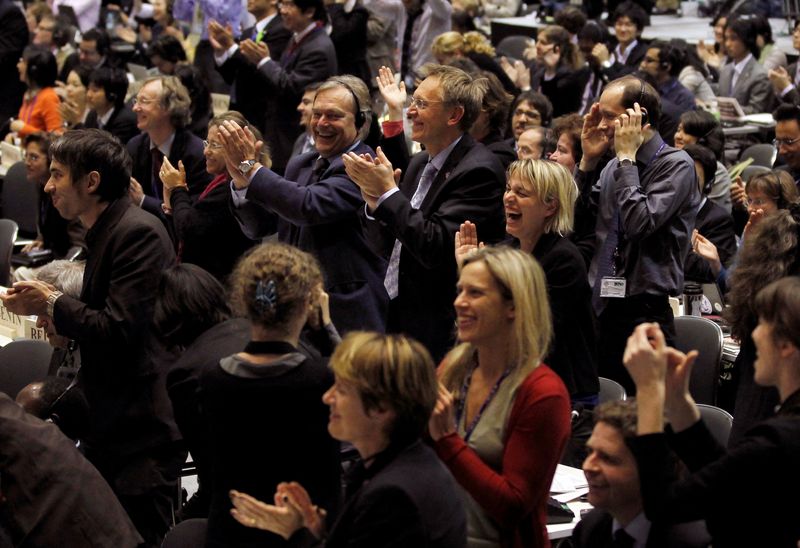Why don’t comply with environmental protection agreements
2022.12.09 01:32
[ad_1]

Why don’t comply with environmental protection agreements
Budrigannews.com – The goal of the United Nations biodiversity talks this month in Montreal is to reach a new global agreement. However, this isn’t the first time governments have attempted to set agreed-upon targets to stop environmental degradation.
In fact, many of the 24 conservation goals currently under discussion aim to improve on the Aichi Biodiversity Targets, the world’s last set of conservation goals, and avoid mistakes from the past.
The Aichi targets that came to an end in 2020 are shown here, with every one of them still unmet.
At the 2010 U.N. Convention on Biological Diversity (CBD) summit in Nagoya, which is in the Aichi prefecture of Japan, the Aichi Targets were adopted. Among the goals were reducing deforestation by at least half over the next decade and reducing pollution so that it no longer harms ecosystems.
However, experts claim that a lot of the targets did not require specific actions from countries and contained ambiguous language.
After parties embraced the Aichi targets, they were supposed to devise their own public biodiversity techniques that would imitate the objectives spread out by Aichi. These strategies were developed by nearly all parties, but the majority were never fully implemented.
The most remarkable Aichi objective — and one of only a handful of exceptional to incorporate a mathematical objective — meant to secure or ration 17% of all land and inland waters and 10% of the sea before the decade’s over.
More Lukoil to sell Sicilian plant to American Crossbridge
Despite some progress toward that objective, the world ultimately failed. Although the degree of protection varies, approximately 15% of the world’s land and 8% of ocean territories are currently protected.
A U.N. assessment conducted in September 2020 found that no country within its borders met all 20 Aichi Targets.
The evaluation found that approximately 10% of the targets did not see significant progress. Six of the goals were deemed “partially achieved,” including the conservation of land and ocean.
Elizabeth Maruma Mrema, executive secretary of the CBD, stated, “At a global level, none of the Aichi Biodiversity Targets were met or achieved, but we also know that some progress was made at the national level in a number of countries.”
The United Nations ultimately deemed Aichi a failure, and the CBD secretariat urged parties to create a new guiding document to guide conservation efforts beyond 2030.
Experts claim that the Aichi goals were difficult to implement due to the absence of clearly defined metrics by which progress could be measured.
Basile van Havre, who is assisting in the mediation of negotiations regarding the new goals on behalf of the CBD, stated, “Aichi was made of aspirational targets, which was great for… enabling people to do a lot, but not great for communication.”
He stated that the fact that the success of the goal could be defined by a single number was one of the reasons the world was able to achieve the goal of conserving 17 percent of the world’s land areas.
“It’s critical to have quantifiable targets,” he said.
With Aichi, success monitoring and reporting was also a major issue. The majority of nations failed to inform others of their progress or lack thereof.
More Why does Turkey not allow oil tankers?
Hugo Schally, a European Union biodiversity negotiator, stated, “The agreement on robust monitoring, planning, reporting, and review framework is a key priority for us.”
“Because that is what led to these negotiation procedures and the ineffectiveness of the Aichi framework.
The fact that developing nations were unable to achieve the Aichi goals due to a lack of financing has prompted negotiators to include financing plans in the draft being negotiated at the Montreal talks.
The primary source of funding for international biodiversity protection is the Global Environment Facility, which has received approximately $5 billion from 29 nations for the funding period from 2022 to 2026.
According to an assessment conducted in 2019 by a number of conservation institutes, this is hardly sufficient to cover the annual funding gap of $711 billion.
In addition, governments other than the environmental ministers who brokered the deal did not support the Aichi targets.
Mrema of the CBD stated, “We need the whole government.” It is not a matter for the environment ministries to handle alone. One of the things we’ve learned from the Aichi Biodiversity Targets’ failure is this.








